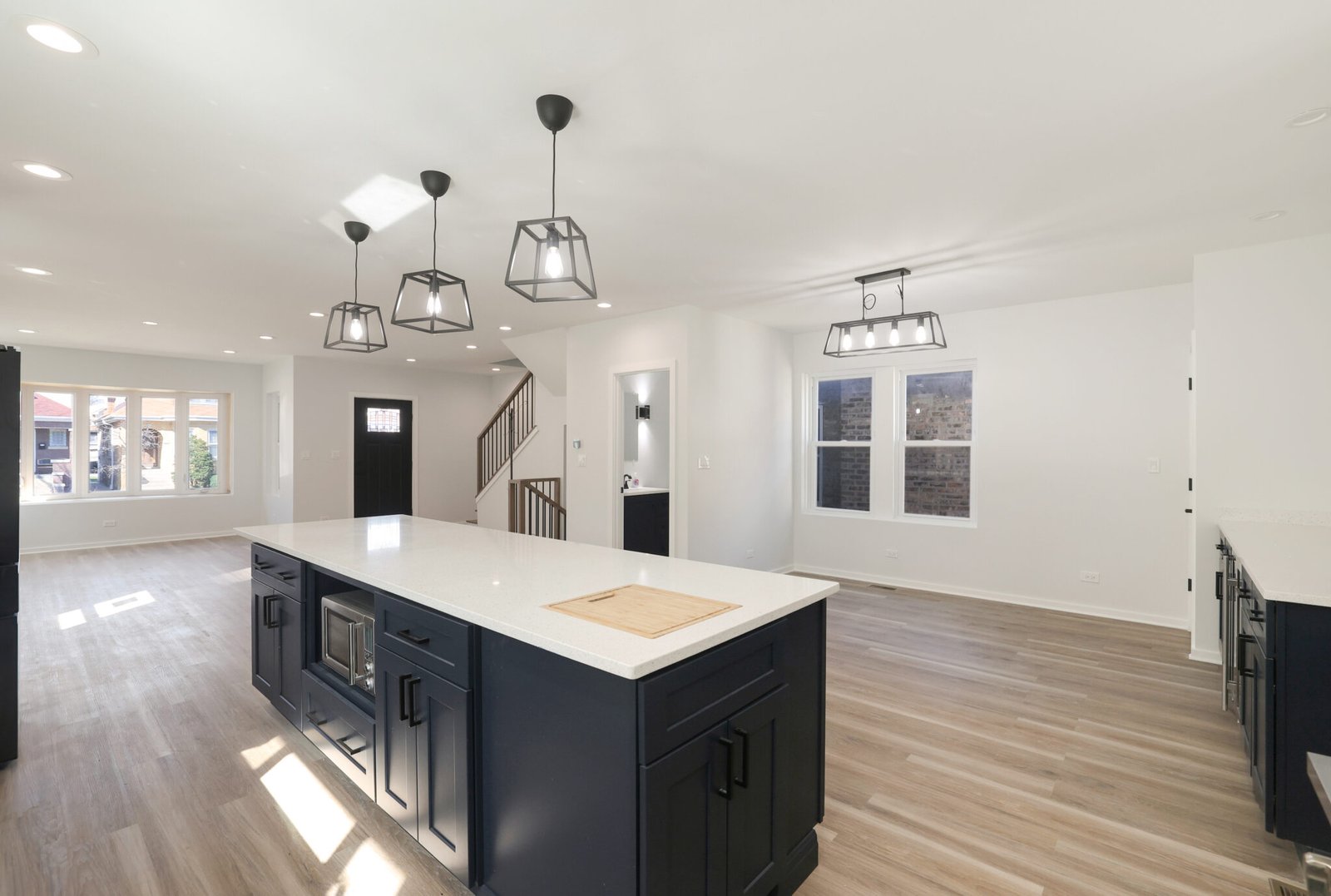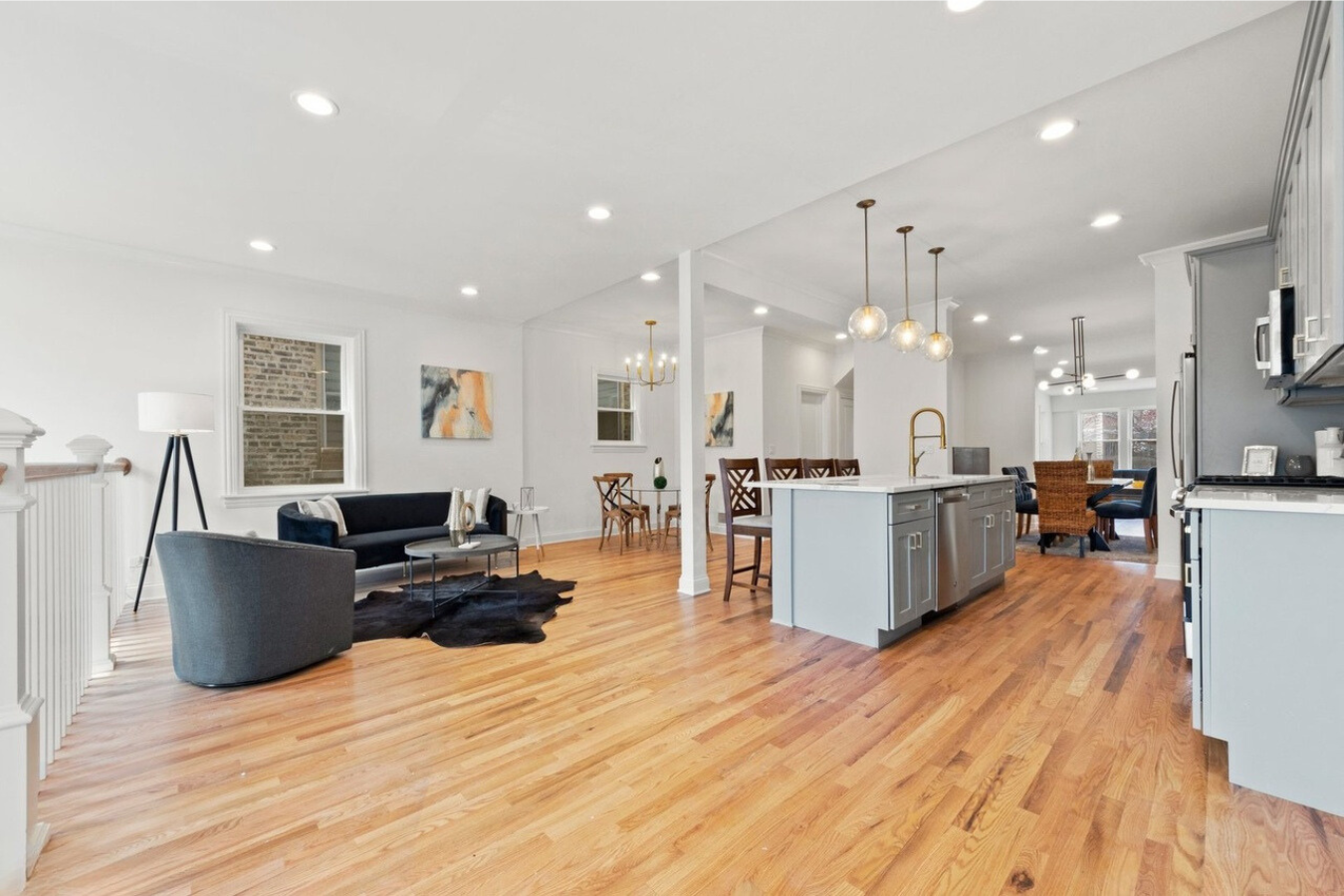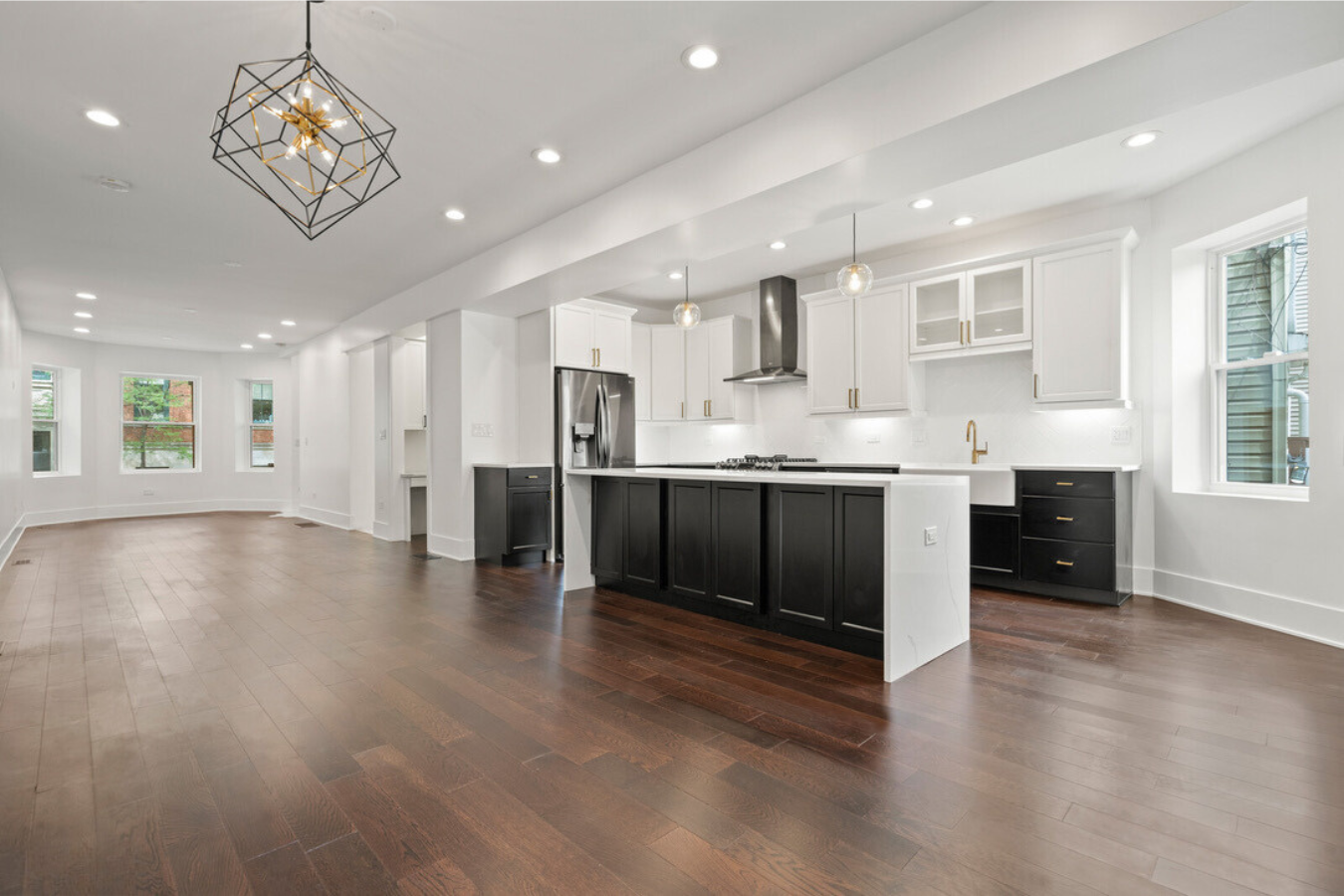
6 Modern Kitchen Design Ideas – Transform Your Space with Innovative Upgrades
Modern kitchen remodeling isn’t just about updating appliances or opting for a trendy color palette—it’s about creating a functional, dynamic space that reflects your lifestyle and aesthetic. At Pegasus Construction, we understand that your kitchen is the heart of your home, where culinary creativity meets practical functionality. In today’s rapidly evolving design landscape, modern kitchen design ideas focus on a blend of innovative layouts, cutting-edge materials, advanced technology integration, and personal customization. This comprehensive guide explores six transformative kitchen design ideas that can help you revamp your space, optimize efficiency, and provide a lasting impression on guests and family members alike.
In the sections below, you will find a detailed, numbered list of modern kitchen design ideas, starting with how contemporary layouts can maximize space and ending with practical tips to achieve a truly transformational
. Each item begins with a direct answer to the common query and then delves into its characteristics, benefits, research-backed insights, and real-world examples. Let’s explore how you can adapt and transform your kitchen with the latest trends and expert advice.
1. Contemporary Layouts Revamping Kitchen Spaces – Maximizing Efficiency and Flow

How do contemporary kitchen layouts transform your space? Contemporary kitchen layouts, including open-plan designs and galley configurations, are engineered to maximize functionality and create a seamless flow between cooking zones and social areas. These layouts emphasize spatial efficiency, allowing for better interaction between different zones of the home and ensuring that every square inch of space is optimized.
Directly addressing key design challenges, modern layouts use geometric precision to reduce clutter and open up the room. For instance, an open kitchen adjacent to a living area not only improves communication but also allows natural light to better illuminate the space. Industry experts at Architectural Digest (2022) have noted that homeowners report an increase of up to 30% in usability and aesthetic appeal when switching to
designs. By eliminating traditional barriers such as walls and partitions, you can incorporate functional islands, integrated seating, and strategic storage solutions—giving your kitchen a contemporary makeover that is both visually impactful and highly efficient.
Furthermore, these modern layouts often support multi-functional spaces that encourage social interaction, casual dining, and collaborative cooking, making the kitchen a vibrant hub of your home. One notable example is the “peninsula layout,” which offers additional countertop space while maintaining an open feel. This approach not only helps in efficient movement but also lends a sense of spaciousness that is ideal for modern living.
2. Innovative Material Choices in Modern Kitchen Design Ideas – Elevating Aesthetics and Durability
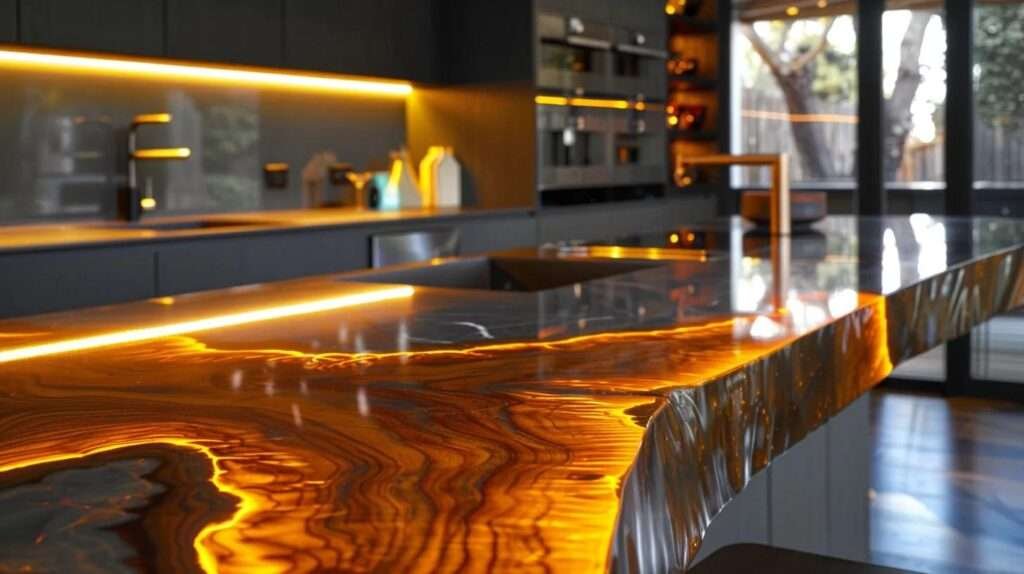
What makes innovative material choices transformative in modern kitchen design? The careful selection of materials—ranging from engineered stone countertops to reclaimed wood accents and sustainable composite cabinetry—serves as the foundation upon which modern kitchens are built. These choices not only elevate the aesthetics of your space but also contribute to long-lasting durability and functionality.
High-performance materials such as quartz, granite, and recycled glass are increasingly popular due to their resistance to scratches, stains, and heat. According to a study published in the Journal of Interior Design (Smith et al., 2021), kitchens featuring engineered stone countertops reported an average satisfaction increase of 27% due to the ease of maintenance and the high-end look they provide. Additionally, innovative composite materials in cabinetry offer protection against moisture and temperature variations while maintaining a sleek, modern profile.
Integrating natural elements like wood—especially reclaimed or sustainably sourced wood—adds warmth and character to your kitchen while still meeting modern design standards. This approach creates a balanced mix between industrial chic and farmhouse charm. For example, incorporating a statement wood-paneled accent wall behind your cooking range complements stainless-steel appliances and minimalist cabinetry. Such careful blending of materials provides both the tactile comfort of organic textures and the technical performance of
.
Finally, advancements in finish technology, such as high-gloss laminates or matte textures, allow you to tailor the look of your cabinetry that suits your overall color scheme and decorative intent. Choosing the right material mix not only boosts curb appeal but also contributes to a practical, resilient kitchen environment meant to endure the test of time.
3. Technology Integration Transforming Kitchen Experiences – Enhancing Functionality and Comfort

How does technology integration change the kitchen experience? Integrating advanced technology into modern kitchen design has emerged as one of the most effective ways to enhance both functionality and comfort. Smart kitchens utilize a network of interconnected appliances and devices, which streamline day-to-day activities and create an environment that adapts to your specific needs.
First, smart appliances such as refrigerators with built-in screens, voice-activated ovens, and Wi-Fi-enabled dishwashers offer unprecedented convenience. These devices allow you to monitor inventory, preheat your oven remotely, and adjust wash cycles via smartphone apps, effectively saving time and energy. A report from the Consumer Electronics Association (2022) indicates that smart kitchen integrations can reduce energy consumption by up to 20% while simultaneously increasing work efficiency.
Moreover, smart lighting systems that adjust brightness and hue according to ambient conditions contribute to energy savings and create a customized ambiance. For example, pendant lighting over the kitchen island can be programmed to change levels depending on the activity—intense white light for meal prep and a soft, warm tone for dining.
In addition to appliances, innovative touchless faucets and integrated sound systems are redefining the kitchen experience by offering ease-of-use and a hygienic solution for busy family environments. The integration of sensors and automation provides real-time feedback, such as water usage statistics and energy monitoring, which supports sustainable living practices. The seamless fusion of technology in the kitchen not only makes everyday tasks simpler but also transforms the overall home experience by creating a space that is responsive, intuitive, and efficient.
4. Aesthetic Innovations Infusing Character Into Kitchens – Blending Artistry with Function
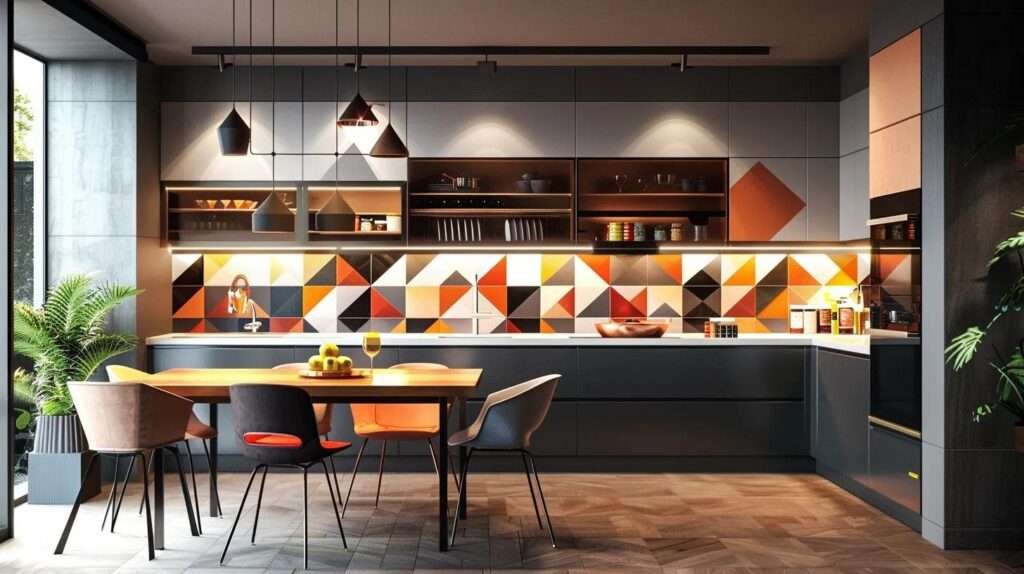
What role do aesthetic innovations play in modern kitchen design? Aesthetic innovations refer to the creative and artistic decisions that infuse your kitchen with personality and character while still adhering to the functional requirements expected of a modern space. Techniques such as the use of statement lighting, bold backsplashes, and unique sculptural elements are at the forefront of contemporary kitchen remodeling designs that bridge artistry with everyday usability.
A central idea in modern kitchens is the incorporation of visual interest through layered design elements. For instance, pendant lighting made from brass or matte black metals not only serves a practical function but also becomes a focal point in the room. Research published in the International Journal of Design (Lee & Martinez, 2020) finds that kitchens incorporating such artistic touches see a substantial increase in user satisfaction, often noted as an emotional uplift that contributes to a welcoming and warm environment.
Another aesthetic element gaining traction is the integration of pattern through tile or wallpaper. Geometric patterns, herringbone arrangements, and textured mosaic backsplashes are skillfully employed to create depth and dynamism. These elements can be paired with minimalist cabinetry to balance visual noise, ensuring that the kitchen feels both vibrant and organized. A well-curated selection of high-impact visuals, such as a statement art piece above the cooking area, can reinforce the overall design narrative and leave a lasting impression on visitors.The use of contrasting colors, whether through a bold accent wall or a mix of natural and industrial finishes, further cements the kitchen’s role as an artistic retreat. This approach not only inspires creativity but also sets a sophisticated tone that aligns with the modern homeowner’s pursuit of
.
5. Customization Approaches Tailoring Modern Kitchen Design Ideas – Personalizing Your Culinary Space

How can customization approaches make your kitchen truly unique? The trend toward personalized kitchen design is driven by the desire to create spaces that reflect the homeowner’s personality, lifestyle, and specific needs. Customization in modern kitchens can be achieved through modular cabinetry, bespoke countertops, tailor-made lighting solutions, and even personalized storage systems that align with your daily habits. For more insight on these elements, consider our kitchen remodeling services.
The benefits of a customized kitchen extend beyond mere aesthetics; they include enhanced functionality, increased property value, and a more enjoyable cooking experience. By tailoring your kitchen to your workflow—for instance, by incorporating pull-out pantry cabinets, dedicated spice racks, or hidden charging stations—you can significantly improve efficiency. A study from the Journal of Home Design (Anderson et al., 2021) revealed that homeowners who invested in customized storage solutions reported up to a 35% improvement in kitchen utility. For more information, you can check out our
.In addition, bespoke elements such as handcrafted backsplashes or custom-built islands make your kitchen a one-of-a-kind space that stands out in architectural magazines and open houses. Customization allows you to combine high-quality materials with precise craftsmanship which can be adapted to both existing and forward-looking design trends. By working with experienced contractors like
, you can integrate multiple design systems—ranging from traditional to ultra-modern—resulting in a harmonious balance that is entirely personal.
This approach not only improves the overall usability of your space but also elevates the personal connection you feel with your home. Ultimately, by embracing customization and challenging conventional design norms, you can create a kitchen that truly resonates with your vision and enhances your everyday life.
6. Practical Tips for Achieving Transformational Kitchen Upgrades – Balancing Vision, Budget, and Execution

What practical tips can ensure a successful transformational kitchen upgrade? Achieving transformational kitchen upgrades requires a strategic mix of clear vision, meticulous planning, and execution that balances both aesthetic and practical elements. The process begins with establishing a clear plan that outlines your design priorities, budget constraints, and future goals—ensuring that each upgrade is both achievable and sustainable.
A key tip is to begin with a detailed kitchen audit: evaluate your current layout, storage options, and workflow inefficiencies. Identifying these bottlenecks allows you to set a targeted plan for improvements. For example, installing additional under-cabinet lighting or switching to soft-close drawers can increase functional efficiency and add subtle luxuries without significantly driving up costs. Maintenance of a realistic budget is crucial; research suggests that kitchen remodeling projects typically see a return on investment (ROI) of 70–80% when completed with professional guidance (National Kitchen & Bath Association, 2022). For more information, visit our
services.
Another practical tip involves prioritizing high-impact areas such as countertops, cabinetry, and flooring. Upgrading to durable, low-maintenance materials can significantly uplift your kitchen’s appearance while reducing long-term expenses. Don’t overlook the importance of complementary elements like hardware, fixtures, and even the integration of smart technology; these upgradations are often the “icing on the cake” that elevates the overall design concept.
Collaborating with a trusted contractor like Pegasus Construction ensures that each phase—from design to final installation—is executed with professionalism and transparency. Leveraging your contractor’s expertise helps in navigating potential challenges, securing necessary permits, and managing timelines effectively. By focusing on a balanced mix of visionary ideas and down-to-earth practicalities, you can achieve a kitchen transformation that not only meets your current needs but also adapts gracefully to future requirements.
Table: Comparison of Modern Kitchen Design Elements

Below is a table summarizing key elements of modern kitchen design, their functions, benefits, and recommended materials to consider. kitchen remodeling
| Design Element | Function | Benefit | Recommended Material/Feature |
|---|---|---|---|
| Open-Plan Layout | Space optimization | Enhances flow and social interaction | Minimal partitions, kitchen islands |
| Engineered Countertops | Work surface durability | Resistant to heat, scratches, and stains | Quartz, granite, recycled glass |
| Smart Appliances | Automation and connectivity | Energy efficiency and remote monitoring | Wi-Fi-enabled refrigerators, ovens |
| Statement Lighting | Ambient and task lighting | Creates focal points and mood enhancement | Brass or matte black pendant lights |
| Custom Cabinetry | Personalized storage solutions | Maximizes storage and utility | Modular, bespoke cabinetry with soft-close features |
| Sustainable Materials | Eco-friendly design | Reduces environmental impact | Reclaimed wood, recycled composites |
This table provides a quick reference to help you compare key modern design elements, their functionality, and the benefits they offer in a modern kitchen renovation.
Before proceeding with your kitchen remodel, consider how these elements will blend with your overall design vision. Matching technical performance with personal aesthetic preferences is key to ensuring long-term satisfaction and functionality. kitchen remodel
Conclusion

Modern kitchen design is all about striking the right balance between beauty, functionality, and personalization. By revamping layouts to create open, fluid spaces, selecting innovative materials that promise durability and elegance, and integrating advanced technology for efficiency and convenience, you can transform your kitchen into a dynamic and inspiring environment. Aesthetic innovations add character and artistic flair, while customization ensures your space reflects your unique lifestyle. Finally, practical tips help you navigate budget constraints and execution challenges to achieve transformational upgrades that stand the test of time.
services are available to enhance your culinary space.
Whether you’re considering a full-scale remodel or incremental changes, each of these six ideas offers powerful strategies to reimagine your kitchen. Trust in expert guidance and proven techniques to create a space that elevates your home’s value, enhances your daily experiences, and reflects the best of modern design.
Frequently Asked Questions

Q: How can contemporary layouts improve kitchen functionality? A: Contemporary layouts improve functionality by creating open, interconnected spaces that enhance flow and usability. They often incorporate multifunctional zones, reduce physical barriers, and provide optimized circulation paths. This not only facilitates easier movement during meal preparation but also encourages social interaction, making the space more vibrant and user-friendly.
Q: What are the advantages of using innovative materials in kitchen remodeling? A: Innovative materials offer several advantages including enhanced durability, easier maintenance, and improved aesthetics. Materials like quartz and engineered stone provide resistance to wear and tear while reclaimed wood and composites add warmth and sustainable appeal. Research shows that these materials can significantly elevate both the look and performance of a modern kitchen.
Q: In what ways does technology integration benefit modern kitchens? A: Technology integration transforms modern kitchens by automating routine tasks, saving energy, and providing seamless connectivity across appliances. Smart kitchen systems allow for remote monitoring and control of lighting, temperature, and appliances, leading to enhanced efficiency and comfort. These systems can also adapt in real time to your needs, making your cooking experience more streamlined and enjoyable.
Q: How does aesthetic innovation contribute to a kitchen’s overall design? A: Aesthetic innovations, such as artistic lighting and patterned backsplashes, contribute significantly by infusing personality and visual interest into the space. These creative touches help create focal points and balance the overall minimalist design, ensuring that the kitchen is not only functional but also a statement piece that reflects the homeowner’s style and taste.
Q: What practical steps can be taken to customize a kitchen? A: Customization begins with a detailed assessment of your current space and workflow. Practical steps include installing modular cabinetry, bespoke storage solutions, and tailored countertops that meet your specific needs. Collaborating with professionals to integrate smart lighting, accent walls, and personalized fixtures ensures that every element works harmoniously, resulting in a kitchen that is uniquely yours.
Q: How should I approach budgeting for a transformational kitchen upgrade? A: Start with a comprehensive kitchen audit to identify areas for improvement and set realistic priorities. Allocate your budget by focusing on high-impact elements such as countertops, cabinetry, and appliances first while ensuring that design and functionality remain balanced. Consult with experts like Pegasus Construction to receive tailored advice on cost-effective upgrades that offer a strong return on investment.
Q: What is the typical return on investment (ROI) for modern kitchen remodels? A: Studies have shown that modern kitchen remodels can yield an ROI of approximately 70–80%, especially when upgrades are carefully planned and executed with quality materials and professional craftsmanship. Investing in elements that enhance both aesthetics and functionality ensures not only a more enjoyable living space but also a significant boost to your home’s market value. For more information, visit our kitchen remodeling services.
Key Takeaways
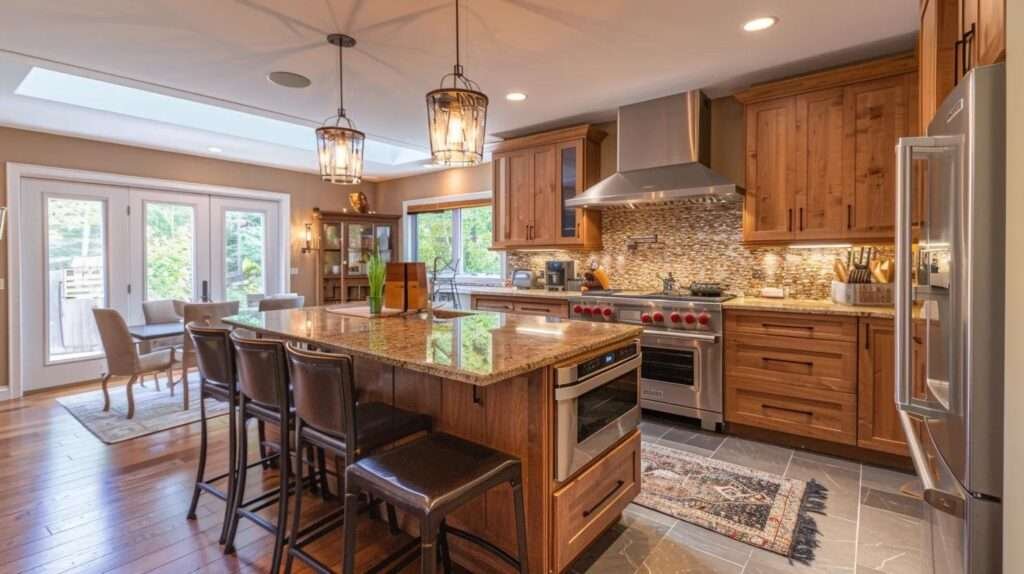
- Open-Plan Layouts: Enhance space efficiency and promote social interaction.
- Innovative Materials: Offer durability, low maintenance, and elevated aesthetics.
- Smart Technology: Streamlines kitchen operations through automated, connected devices.
- Aesthetic Innovations: Use artistic elements to add character and visual appeal.
- Customized Solutions: Tailor your kitchen to fit your unique lifestyle and needs.
- Practical Budgeting: Prioritize high-impact updates for an optimal return on investment.
Final Thoughts
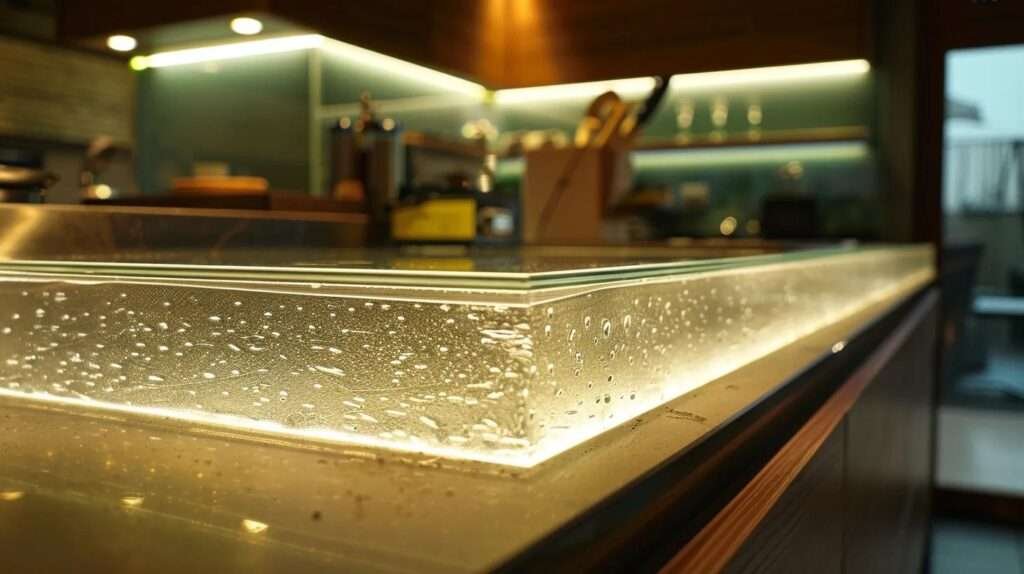
Modern kitchen design is more than just a trend—it’s a thoughtfully engineered approach to creating a space that is both practical and inspirational. By adopting contemporary layouts, innovative materials, technology integration, striking aesthetics, and tailored customization, you can transform your kitchen into a central hub of functionality and elegance. With expert guidance and careful planning, your upgrade will not only enhance the overall value of your home but also enrich your everyday living experience. Trust the process and enjoy the transformative journey of modern kitchen remodeling.

